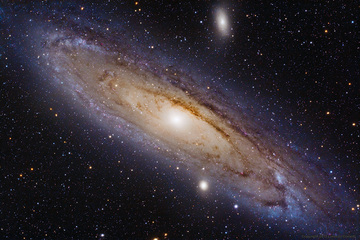Why can't astronomers use parallax to measure distances to other galaxies?
1 Answer
Parallax only works for relatively close stars in our own galaxy. Other galaxies are simply too far away.
Explanation:
Parallax works by measuring the apparent shift of an object against its background from two different vantage points. Astronomers make observations from Earth on either side of the sun.
The parallax formula gives the distance,
The Andromeda Galaxy, M31, is the nearest major galaxy to the Milky Way. The distance to M31 has been measured using other techniques to be

Using the slightly modified parallax formula, we can find the necessary parallax angle to measure the distance to Andromeda.
This is an incredibly small angle. For comparison, the resolution of the Hubble Space Telescope is

